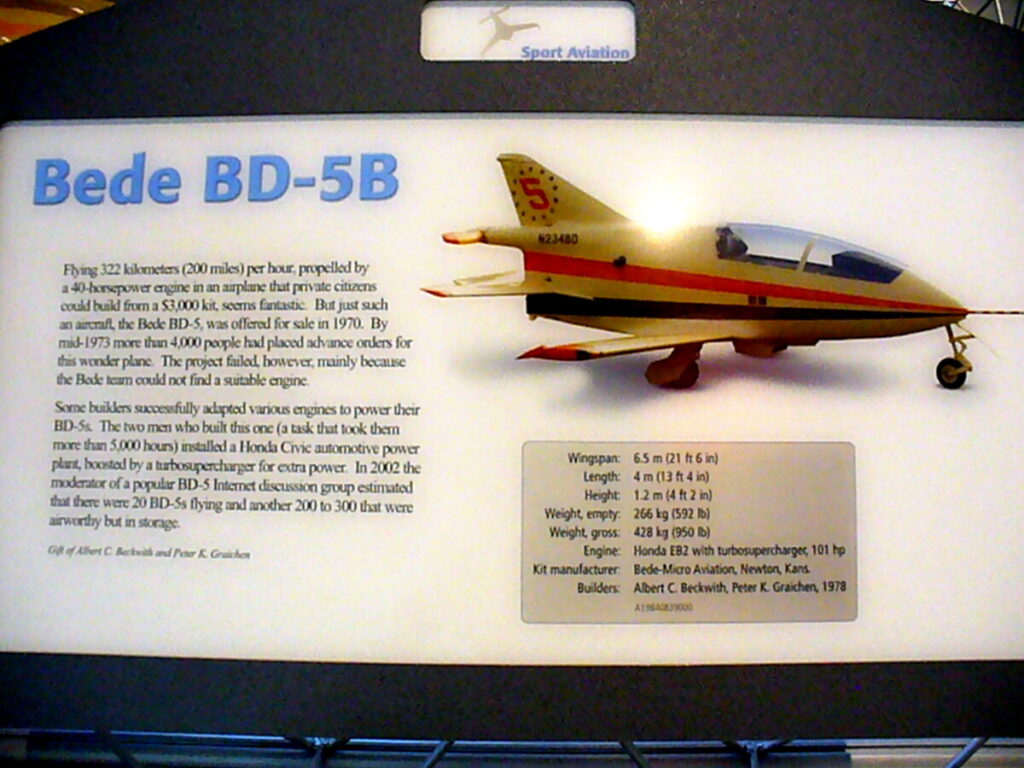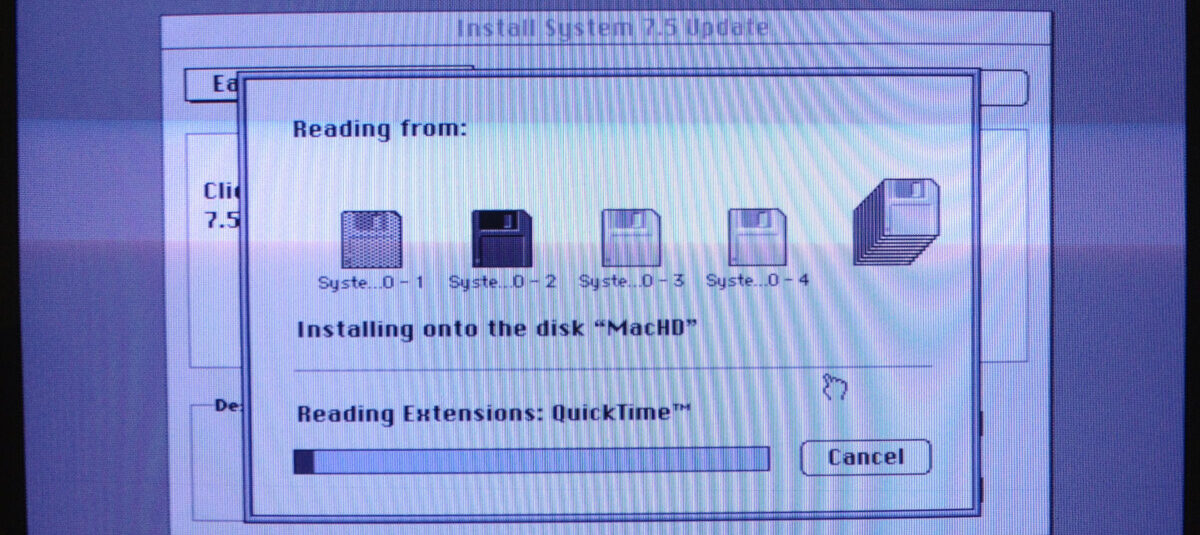

In the pictures above taken at the Udvar-Hazy Center of the National Air and Space Museum outside Washington, DC, you can see a propeller-driven BD-5 kit plane on the left and the plaque in front of its display telling the visitor about the plane and its historical significance. The plaque is a form of technical communication that conveys useful information about the BD-5, including who designed it (Jim Bede), wingspan (6.5m), and more. Think about museums that you have visited and what the signage and plaques next to exhibits looked like.
For this week’s class:
- Weekly Reading Report Exercise
- Intro Lecture and Discuss the Readings
- My Professional Work, Our Sandbox Exercise
- Review Syllabus About Next Week’s Readings and Work




TO: Professor Ellis
FROM: Tiana Beatty
DATE: September 1, 2022
SUBJECT: Tech Com History
Reading about the history of technical communication or rather technical writing was very interesting. I didn’t know that there were so many processes that technical writing and technical communication went through in order for what it is and how it applies in today’s modernized society built based around technology. There was is so much scientific expertise, hypothesizes, and scientific discovery when the development of technical communication and technical writing was created. But by reading about technical communication it only furthered by curiosity as to why technical communication is not only important but why technical communication is needed? Many theories and processes that technical communication progressed through the centuries and yet somehow someway it doesn’t seem as important as other majors areas of technology or sciences would suggest that it is. Knowing that there are many forms of technical communication through different expertise and jobs, why is technical communication the least important topic and why has the process been so ever-changing? Will the process of technical communication and technical writing remain the same? Has technical writing and technical communication become obsolete because other areas of expertise have found ways to make technical communication and technical writing apart of their works therefore not needing technical communicators and technical writers?
I say this because I have been that certain technological companies have been getting rid of technical communicators and technical writers because of the lack of use for them. It may have something to do because of the capital but for someone to not to be able to use their earned skills to do their job and responsibilities it makes me upset. So that’s why the question still remains: will technical communicators and technical writers feel useful again? After knowing the changing theories and evolving structures of technical writing, what will be the next course of action that can make technical communicators and technical writers become not just a necessity to the field of technology, science, and writing as a whole; but what others ways to allow for equal opportunity across the board?
TO: Prof. Ellis
FROM: Bria Glenn
DATE: September 1, 2022
SUBJECT: Tech Comm History
After reading both texts “A Brief History of Technical Communication” and “From the moon to the Microchip”, I was able to understand the history behind what we know as Technical Communication or writing. In ” A Brief History of Technical Communication”, I learned about the way in which needs changed as technology grew more advanced. I also found it interesting that it could be dated back to the 14th and 17th centuries with people becoming inventive within certain fields which includes medicine, religion and the arts. These inventions and discoveries allowed the space for those coming after to make advancements within the work. It was also interesting to learn that it is because of war that allowed for a lot of the technology we use today such as computers to be so beneficial to us. Also, that it was during World War II that Technical Writing became known as a job title. This most likely shifted the need in the job field because with these advancements, there needed to be more people who could operate technology being used. There was something familiar to me in this reading, which was the conduct of research and this was adopted from the scientific method. Something most of us have used in science classes throughout our school careers. Technology went from mainly printed publications to machinery being used, and this cause a severe decline in the job market due to not many people being able to keep with the technological advancements.
TO: Professor Ellis
FROM: Khemraj Persaud
DATE: 9/1/2022
SUBJECT: Tech Comm History
For our weekly reading this week, we read two articles about the history of Technical Writing. The first article I read, “A Brief History of Technical Communication,” by Frederick M. O’Hara, Jr, gave us a history lesson on the origins and development of Technical Writing. Some keys points that stood out were how most scientific information was passed down orally, until the invention of the printing press by Johannes Gutenberg in the 15th century. It was unfortunate that he went bankrupt trying to become the first publisher of printed books. Fast forward to the 18th century when the first scientific journals were created. Science and technology became an important part of the development of the US, as well. As it stands now, the US continues to be the front runner in technical communications. This began during World War II, when technical communicators were required to create standardized instructions for the war efforts. As time has passed, more technological advances have given Technical Writers more tools to complete their goals. As Katherine T. Durack discussed in her article, “From the Moon to the Microchip: Fifty Years of Technical Communications,” the second 25 years of Technical Communications has seen a huge jump in new technology as opposed to the first 25. She stated that some people could have had whole careers before new innovation took hold. As she went through the history of new technologies in the “word-processing” field, from typewriters to IBM’s and laser printers, she touched upon how the technology shaped the workplace in a way that was unexpected. For example, when secretaries were promised new word processors, they never would have imagined that they would be replaced due to these machines. These innovations have come a long way, and it is important to keep up with the times, but also show respect for where we came from.
TO: Professor Ellis
FROM: Naila Butt
DATE: September 1st, 2022
SUBJECT: Tech Comm History
Scientific observations were recorded and preserved by ancient civilizations through scriptures, artifacts, and oral communication. The history of technical communication has evolved tremendously since then. Technical writing first became recognized as a job title during World War II. The post-war boom called for an increase of consumer goods. As a result, with the increase of consumer goods, followed the need for documentation. Users needed technical writers to give guidance in regards to product use, installation, maintenance, and so forth. With the rise of word processors in the 80’s, technical writers were able to provide good documentation. Since then, technological advances has significantly improved he efficacy of technical writers.
TO: Professor Jason W. Ellis
FROM: Khaled M Akam
DATE: 9/1/2022
SUBJECT: Tech comm History
The push for mass improvements in technology in recent years developed us as technical writers. Communication covered almost every field in the working and research industry. From the changes of computer barely fitting in a 4-story building to it being just one-fourth of a pound. The military and government realized the power communication had and applied this to its infrastructure. The need to document was the biggest factor of the improvements in the world. Different powers in this infrastructure begun to support each other and create advances. This relates to technical and professional writing because it allows us to view the process of communication. Throughout the years as writing and reading became much more accessible, so did the way of communication to the audience. Being able to access an abundance of papers from accredited scholars and authors. If we learned anything this brief history, it’s that inspiring to improve comes with our actions. Communication touches everything no matter what field we are in. War brought about an era of mass improvements and innovation. It’s up to us to keep this momentum going throughout every task we come upon.
To: Professor Ellis
From: Sandy Fougeres
Date: 9/1/2022
Subject: Tech Comm History
In the article “What is professional and technical writing and what is its history,” it discussed the history of how technical communication/ writing became a profession. The article talked about Muhammad Ibn Alkowarizmi who in the 12th century was a Tashkent Cleric he developed the concept of writing in a detailed process to be followed to achieve a goal. With this concept technical communication was then able to expand as technology advanced along side it. The process in which to write in a technical way has its roots from science/ electrification of communication the scientific method of questioning. Created by Helmholtz, Bell and Edison that process was then changed from a scientific method to first state the problem, describe the method, display the results and finally draw conclusions. This stemmed from the scientific method in 1830 with the grant provided to investigate steamboat explosions. With war the emergence of technical writing increased as technology advanced and post war there was the increase in consumerism through the purchase of goods and services. This came with the need for documentation on these products on their use, installation, maintenance and integration. As the years past the advancement in science aided technical communication in a useful way as tools to become more efficient. By the 1980s the computer became so advanced in that word processing and its systems introduced new and easier ways to edit and present information.
To: Professor Ellis
From: Aaron Nieves
Date: September 1, 2022
Subject: Tech Comm History
“Civilization is a cumulative enterprise, and communication has always be a vital component of that cumulation process.” This quote really stood out the most throughout both readings this week. Civilization is made up of all these moving parts coming together through communication. Technical communication has come a long away over the last several centuries, from people writing their observations about the stars to people using computers to edit and design. In the 18th century, certain methods of research were standardized, such as the scientific method. Over the last couple of centuries, there have been the greatest amount of growth in the field of technical communication. The second World War further increased the demand to have standardized procedures, as well as descriptions, definitions, instructions and training. In modern times, technology has given technical communication a real identity.
To: Professor Ellis
From: Timothy B
Date: September 1, 2022
Subject: Tech Communication History
This weeks readings were focused on the introductory components of technical communication and how innovative it has become. In one of the articles it is expressed how technical communication has been around since the early periods of life and how different philosophers and creators found wats to incorporate that into their innovations and inventions. This brings up the next main question which will be if technical communicators have been around for so long existing in ancient civilizations used for scientific observations and technological developments. Is there a place for them in the technical industry in the future? As we move forward in the technical world one must know with all the technical innovations created everyday and automation new informative ways to communicate software to to make it more convenient for consumers. A technical communicator must find the best way to write of communicate a professional document or manual.